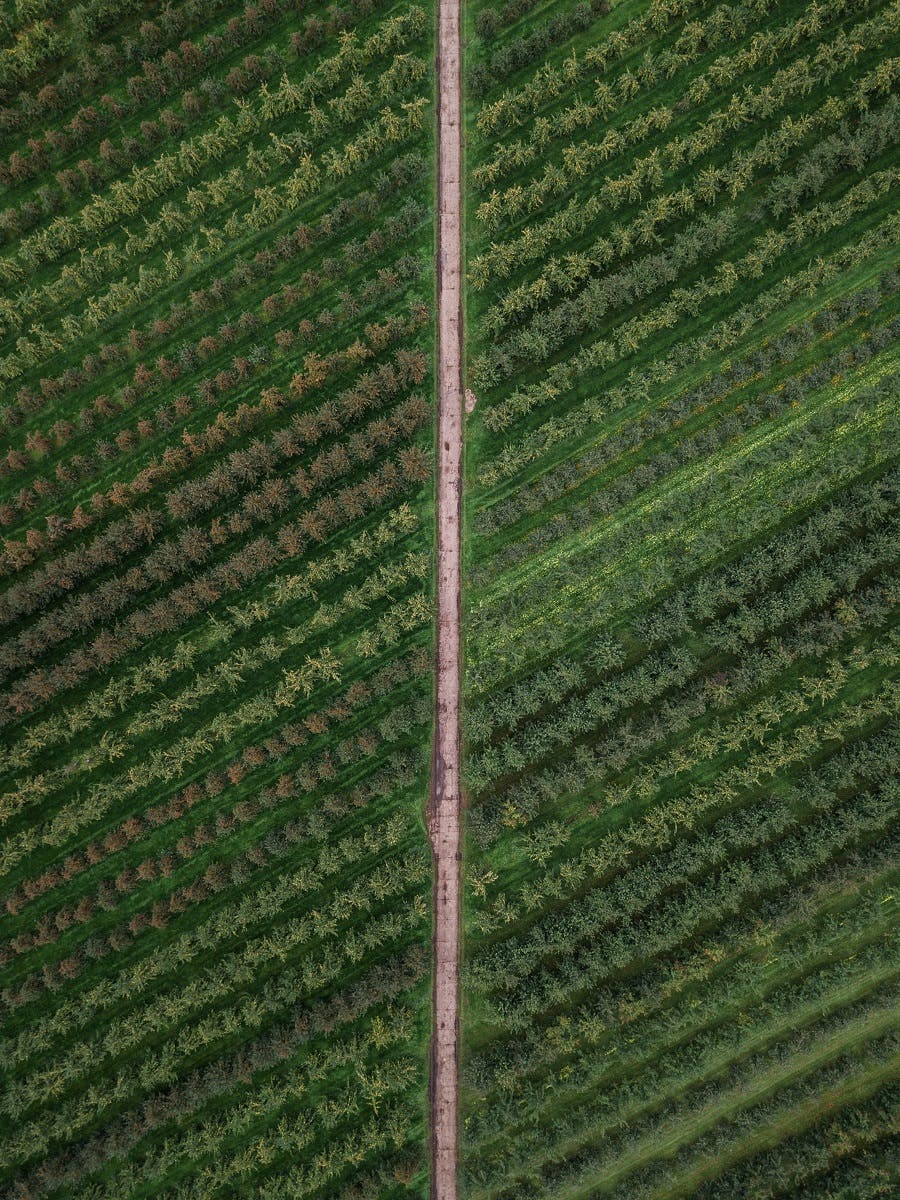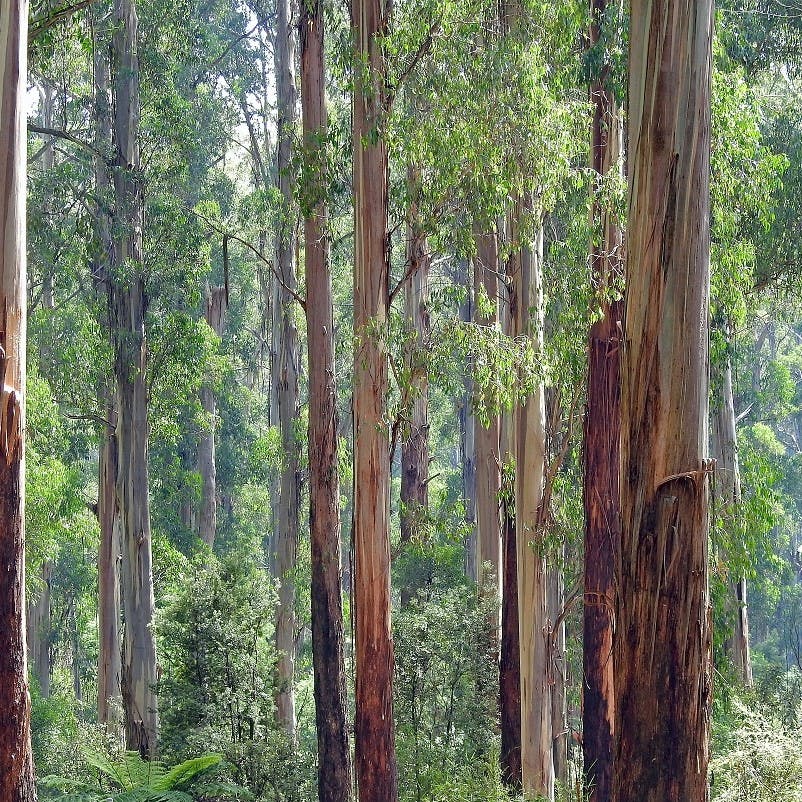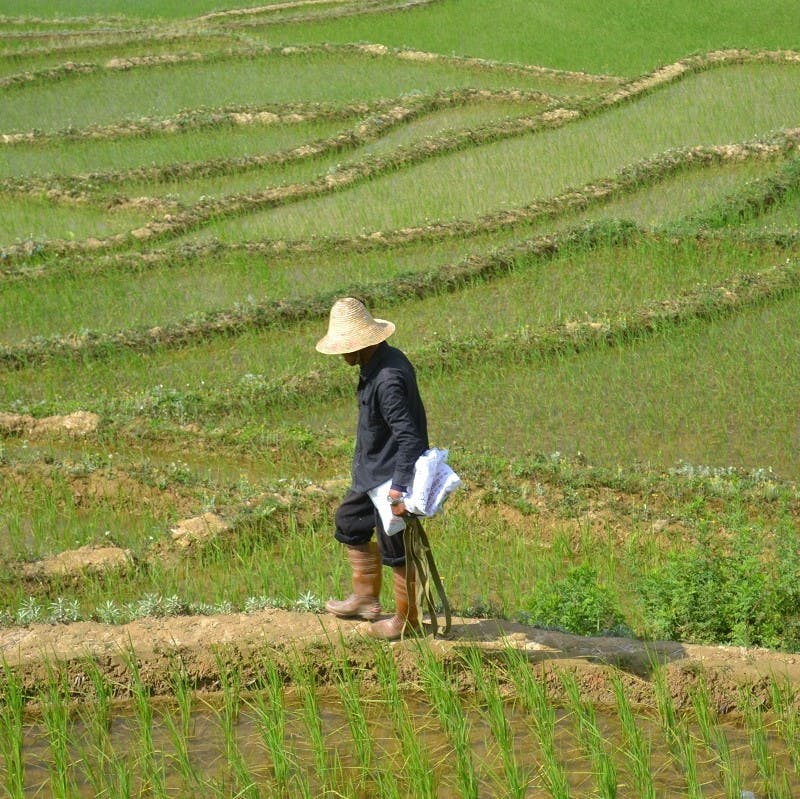- Why tree planting is important and how it helps the environment
- Why tree planting can be bad
- Why monoculture plantations can harm the environment
- The danger of planting non-native species
- Failing Tree Planting Initiatives
- Assisted Natural Regeneration
- Is tree planting worth it?
- Which tree planting charity is best?
Does tree planting really help fight climate change? If done correctly, yes, however, knowing if the overall impact of a tree planting initiative is good for the environment is a complex matter. Many contextual factors affect whether a project decreases the amount of carbon in the atmosphere or has the disastrous opposite effect - emitting more CO2 and causing irreversible damage to ecosystems and biodiversity.
Forests are a fundamental component of our planet's recovery. They are the best technology nature has for locking away carbon and they are centers for biodiversity
Sir David Attenborough
Why tree planting is important and how it helps the environment
It is now more important than ever to grasp a better understanding of fundamental questions around this topic. Large-scale tree planting initiatives are sweeping across the globe claiming quick and dubious successes in the daunting race we face to meet carbon zero targets.
Deforestation and climate change are devastating our existing natural forests. According to FAO we are losing 10 million hectares of forest a year. Not only do forests store carbon and support biodiversity, but we also heavily rely on trees and forests for shelter, food, medicine, nutrients, and building materials. Products derived from forests will also be crucial to sustain going forward as the demand for fewer plastics increases. In addition to being stable long-term carbon sinks, healthy wild forests also provide ecosystem services like soil stabilization, water and air purification, and are more resistant to flooding and fires.
The uncontrollable rate of deforestation makes it very evident that tree planting has an important role in protecting existing forests and restoring degraded lands. This explains the current wave of international tree planting initiatives pledging to sequester large amounts of carbon, restore biodiversity, and sustain livelihoods during the UN’s Decade on Ecosystem Restoration 2021.
With the global community seemingly committed to the cause, what is raising cause for concern? - The very real threat that tree planting can cause more harm than good.

Why tree planting can be bad
By and large, monoculture and non-native species plantations are deemed at fault for the failure of tree planting initiatives in delivering the key objectives of carbon sequestration and biodiversity restoration. Many of these plantations target maximising forest cover without considering the implications of the following pitfalls.

Take action now
Do you want to have a direct impact on climate change? Sir David Attenborough said the best thing we can do is to rewild the planet. So we run reforestation and rewilding programs across the globe to restore wild ecosystems and capture carbon.
Get involvedWhy monoculture plantations can harm the environment
In the case of monoculture plantations, they lack the diversity of species, and thus, the complexities needed to support a rich variety of biodiversity. These often large-scale plantations are guilty of prioritising tree cover over the need for healthy layers of vegetation in forests. This means a lack of ground flora, mid-stories, and deadwood - all of which provide habitats for a wealth of species. In plantations with tightly packed trees, its canopy blocks light reaching the floor, preventing the growth of important ground-level plants.
The planting of single tree species also overlooks the complex network of relationships present in diverse old growth forests. For instance, the mutually beneficial symbiotic association shared between trees and fungi where they exchange services that are essential to the growth of both species. This intelligently intertwined relationship is one example of how the overall success of tree planting projects depends on close consideration of the unique conditions at each site.
Another important aspect requiring careful thought is the mix of tree species ages. The right balance of age structure needs to be struck in order for natural regeneration to occur. Given the fact that most monoculture plantations plant young trees in large batches, there is no age mixture. In these cases, forests will need to be managed to maintain a diversity of structure over time. Thinning is a technique which enables light to reach the ground where plants and young saplings can develop and in turn attract wildlife. Therefore, tree planting initiatives have the responsibility of managing a forest’s development to ensure longevity and satisfy the carbon capturing targets they set out to meet.

The danger of planting non-native species
Timber plantations are renowned for their use of non-native species (for fast growth rates) that can have dire consequences for local ecology. In Scotland, there is a worrying amount of such plantations where invasive species are responsible for negatively impacting native flora and fauna. In some cases, the ramifications are compounded by the decisions taken on where to plant these non-native species. Peat bogs - an enormously effective natural carbon sink - have in some cases been stripped of their carbon capturing capabilities as they are drained to make way for timber plantations.
Further examples of why certain tree planting projects can be calamitous come from some large-scale afforestation projects. By ploughing the land in preparation for new trees to take root, the soil is disturbed and releases tremendous amounts of carbon that would take decades for the new trees to sequester.

Failing Tree Planting Initiatives
Criticism has been levelled at several large international programmes based on the grounds mentioned previously. China’s Natural Forest Protection (NFPP) and Sloping Land Conversion Programs (SLCP) are two which have come under scrutiny by recent studies for their overall negative impacts, despite their claimed accomplishments. On-the-ground observations reported failures and marginal successes due to ecological, economic, and bureaucratic factors. Ecologically, the reasoning was the project’s wide-spread use of only a few species that were unsuitable for the region and resulted in a decrease of biodiversity. With a combined budget allocated to the projects of $52.2 billion US dollars, it speaks volumes of the need to address this issue.

Assisted Natural Regeneration
To achieve effective forest restoration, ecologists often favour another approach ahead of tree planting called assisted natural regeneration: the management of forests through interventions like enrichment planting, weeding and fencing to accelerate regeneration. Some of the key reasons are,
- Local Provenance: native species will self-seed from the local stock which retains the area's unique richness and adaptations.
- Distribution: facilitating natural regeneration will allow a natural distribution of species to continue. In a natural distribution, species select their preferred soils and hydrology, a process difficult to recreate even with sophisticated soil mapping techniques.
- Ecological Succession: restoring a landscape by tree planting can skip stages of ecological succession and the regrowth of other key ecosystems. For instance, for a landscape to transform from grasslands straight to woodlands would mean missing scrub species and the biodiversity adapted to them.
- Cost: where conditions exist for natural regeneration, the costs to effectiveness ratio is better than with tree planting.

Is tree planting worth it?
Tree planting is an vitally important component in the fight against climate change and biodiversity loss provided the right trees are planted in the right places. The flaws of the aforementioned approaches show there needs to be a strict focus on critically evaluating a project’s impact. Here are some situations where tree planting delivers clear benefits.
- Tree planting is needed where natural regeneration is not feasible or likely to occur. A range of factors can affect successful natural regeneration such as on landscapes where herbivores over-populate and graze on young saplings, or when assisting ecological succession results in an abundance of invasive species that blocks the regeneration of native species.
- Without tree planting interventions, some areas devastated by deforestation risk further consequences in the way of soil erosion, potentially exacerbating floods. This is the case with clear-cut areas in the Carpathian Forests in Romania where our reforestation efforts seek to stabilize the soil.
- Other critical situations where tree planting can more rapidly assist biodiversity include planting alongside rivers to halt increases in water temperatures. This climatic impact is affecting Scotland’s salmon populations whose numbers are deteriorating due to increased temperatures.
- Tree planting is not only needed for its ecological benefits, there is a huge economic and social demand for increased woodlands also. The UK, with a below European average forest cover of 13%, is the second largest importer of timber in the world. Scotland, once home to a wealth of ancient forests, has been depleted with only 4-5% of native woodlands remaining.
The challenge is how best to manage existing forests and land-uses to incorporate our needs for timber, ecological restoration and local livelihoods.

Which tree planting charity is best?
There is no simple formula of knowing when it is best to plant trees and which organisations to support. Complexities and unique contextual factors exist at each location that require careful considerations, although there are guiding questions to ask yourself when choosing projects to back.
- What are the project’s main aims?
Whether it is to produce timber, support the local economy somehow, improve biodiversity, carbon offset, or a combination of various objectives, knowing the clear aims of the project allows you to decide if it aligns with your values. - How does the project propose to evaluate success?
A study conducted on China’s NFPP and SLCP programmes concluded outcomes were dramatically hindered by problems with the bureaucratic management of the programmes. Reasons cited included a lack of support and funding for the relevant authorities who implemented the programmes. Although substantiating future successes isn’t straightforward, you can find out how a project proposes to evaluate its objectives and check its level of transparency. - Does the organisation base their decisions on sound scientific theories/approaches? Is it taking an Adaptive Management approach?
Check what scientific grounds the project will follow. An adaptive management approach is suitable for tree planting projects where key decision-makers respond to new information and contextual factors as they arise. - How is the project going to assess its carbon footprint?
Avoid projects that could end up causing a disastrous negative impact on the carbon balance by releasing carbon from natural sinks. Gain a better understanding of the proposed site to discover if natural sinks such as soil, peatlands and wetlands will be disrupted. - Is assisted natural regeneration being applied where possible?
Ask how the project will utilize assisted natural regeneration and if any barriers exist, how they intend to overcome them. Project managers should be able to explain to you where natural regeneration is not possible and why other interventions are needed instead. - Has the project selected a site(s) where trees are needed and suitable for?
As was the unsuccessful case in China, trees were planted on lands previously non-forested that were unsuitable and resulted in poor survival rates. Projects should seek to plant in areas that connect or expand existing forests and degraded forests. This brings greater improvements to biodiversity. - Are tree species diversity and age structure considered?
To regain biodiversity and key ecosystem services in a restored forest, a project must examine local conditions and choose the correct mix of species and manage age structure. - How is the project involving the local community?
Research has shown that involvement of the local community is fundamental to the long-term success of a project. Financial and social incentives help a project to be implemented and sustained. A project should add value to the people most affected. - Is the project set for long-term evaluation?
Most projects are intensively managed in the early stages, however, some fail to monitor impacts in the long run. What methods will your chosen project implement to maintain its objectives are met over time? - What is the predicted impact on multiple areas?
Tree planting projects shouldn’t have a sole focus on one area but address the interconnectedness of biodiversity, carbon sequestration, ecosystem services and socio-economic benefits. Admittedly there will be tradeoffs, but be sure they can be justified scientifically. Where a project’s main goal is timber production, monoculture plantations seem justified, although evidence suggests restoring native forests is a more beneficial approach to increasing biomass and carbon sequestration.
Our approach to Tree Planting at Mossy Earth
Restoring native, wild forests is the primarily goal of every reforestation project we run. This means only planting native trees where they would grow naturally. The projects we support focus on helping to restore ecosystem services, conserve biodiversity, and mitigate the impacts of climate change. This involves considering how we can improve species diversity and functionality, habitats for wildlife, and provide services like soil stabilization. To learn more, see our Reforestation Methodology and how you can directly restore ecosystems through our rewilding projects with the Mossy Earth membership.
If you are interested to hear more on this topic, check out our podcast The Eco Side. Our guest Matthew Hay, director at Reforesting Scotland & project manager at Forest Carbon together with Hannah Kirkland, our conservation biologist, discuss the fundamental issues.

Sources & further reading

- “Ten golden rules for reforestation to optimize carbon sequestration, biodiversity recovery and livelihood benefits” - Global Change Biology
- “Reforestation Programs in Southwest China: Reported Success, Observed Failure, and the Reasons Why” - Journal of Mountain Science
